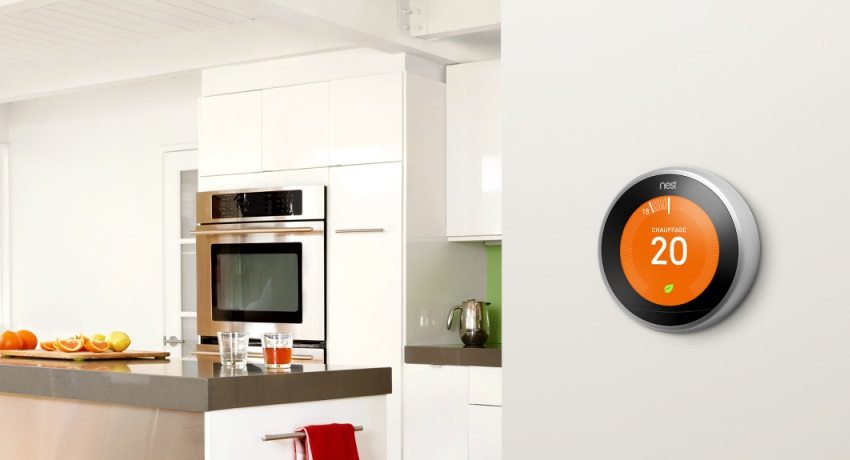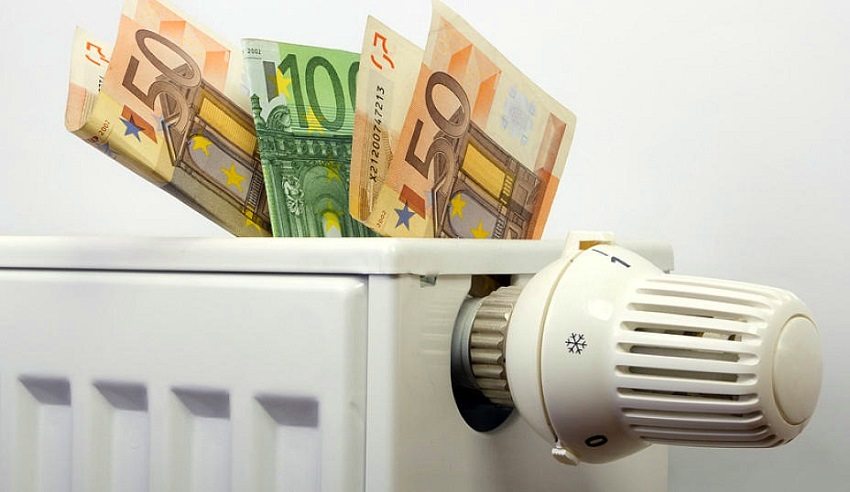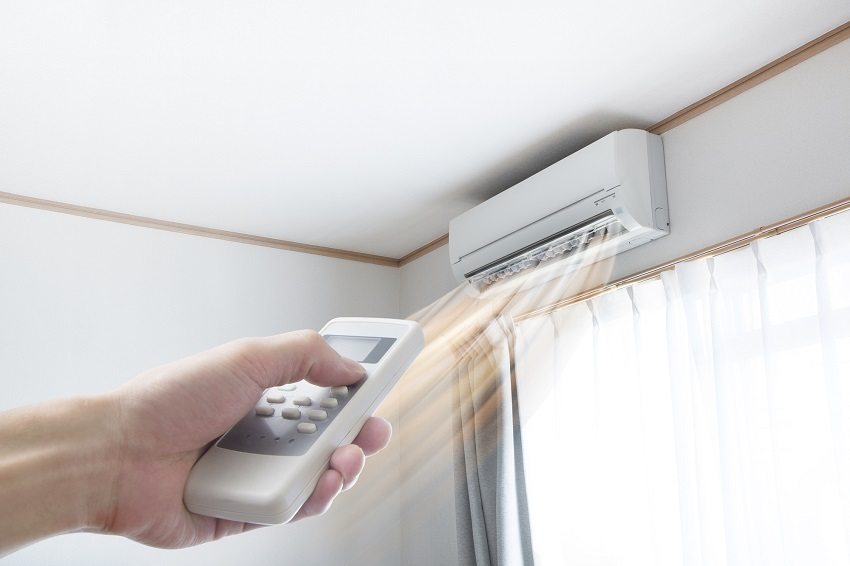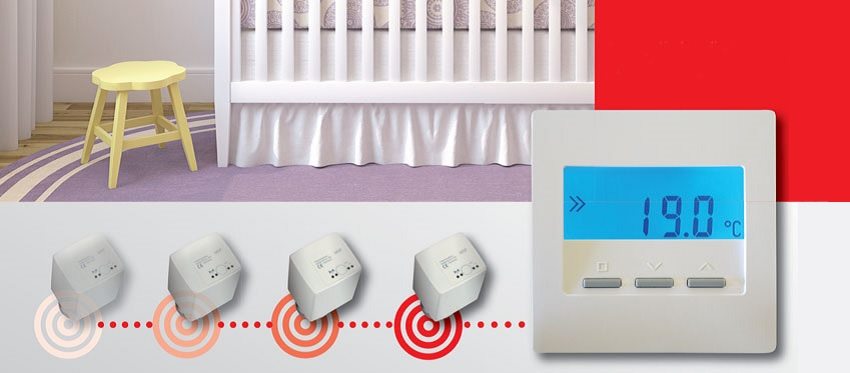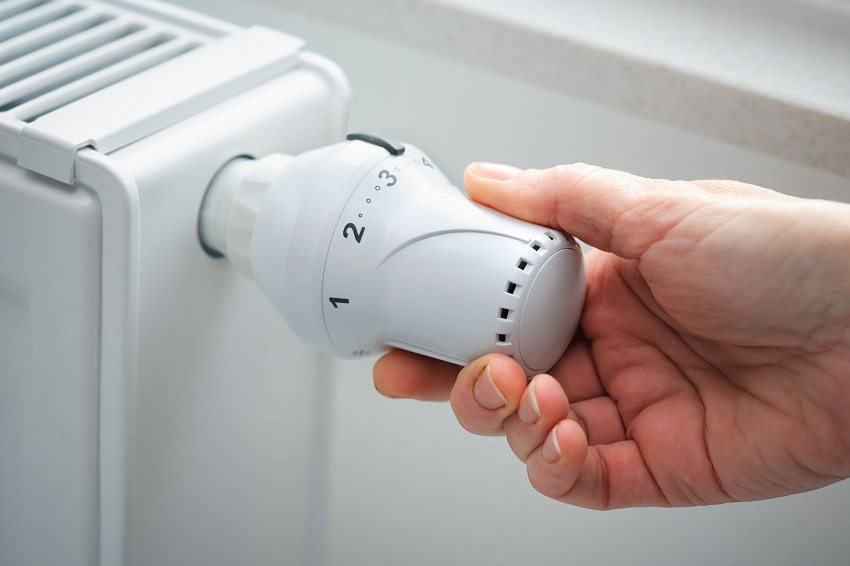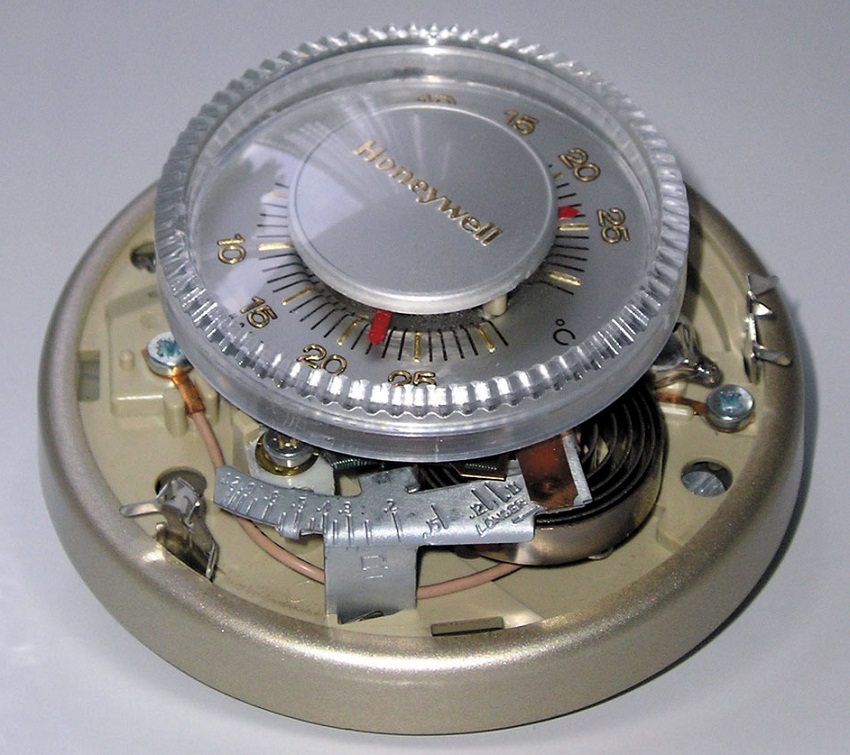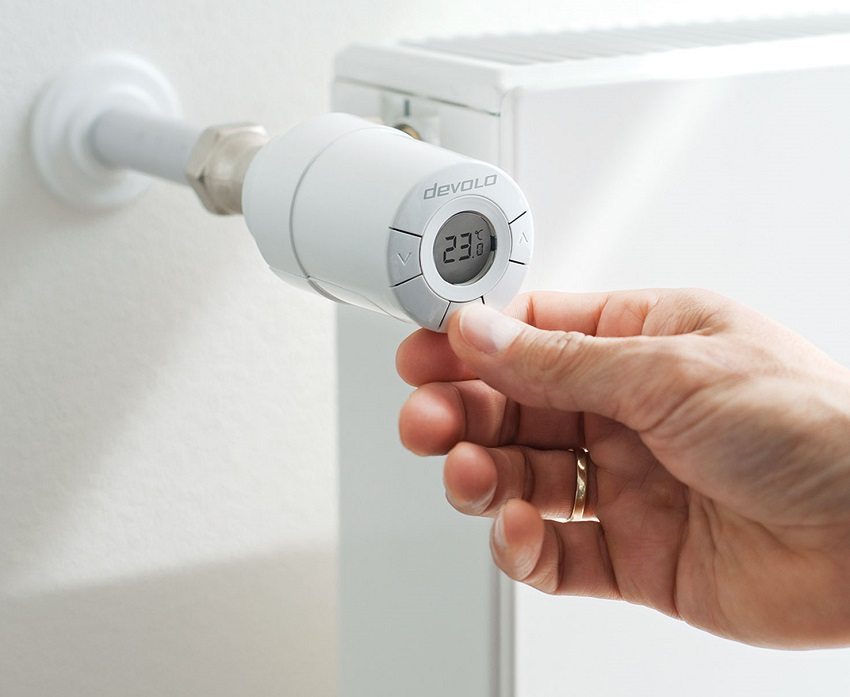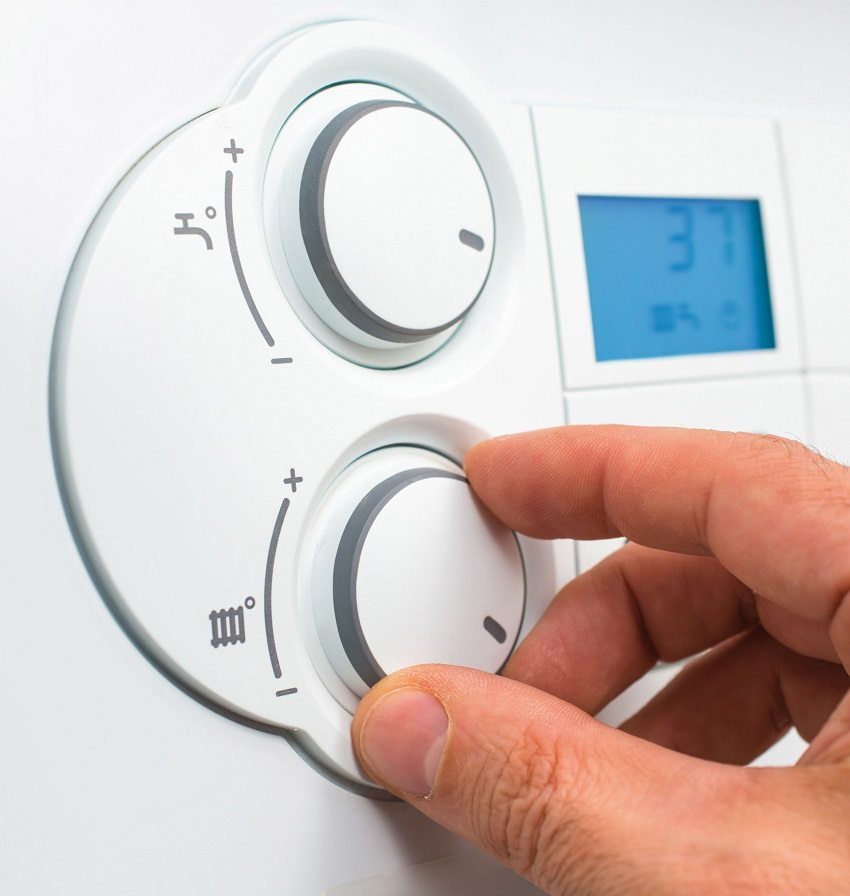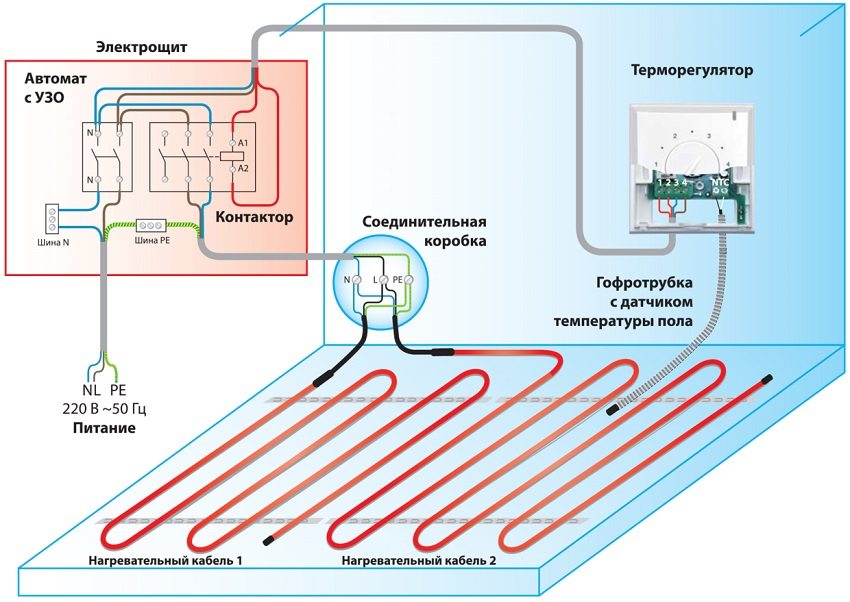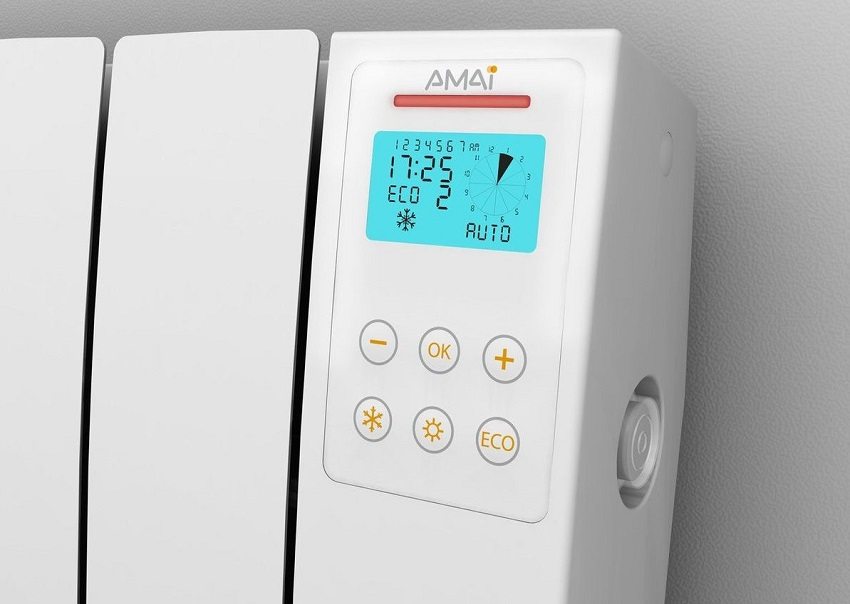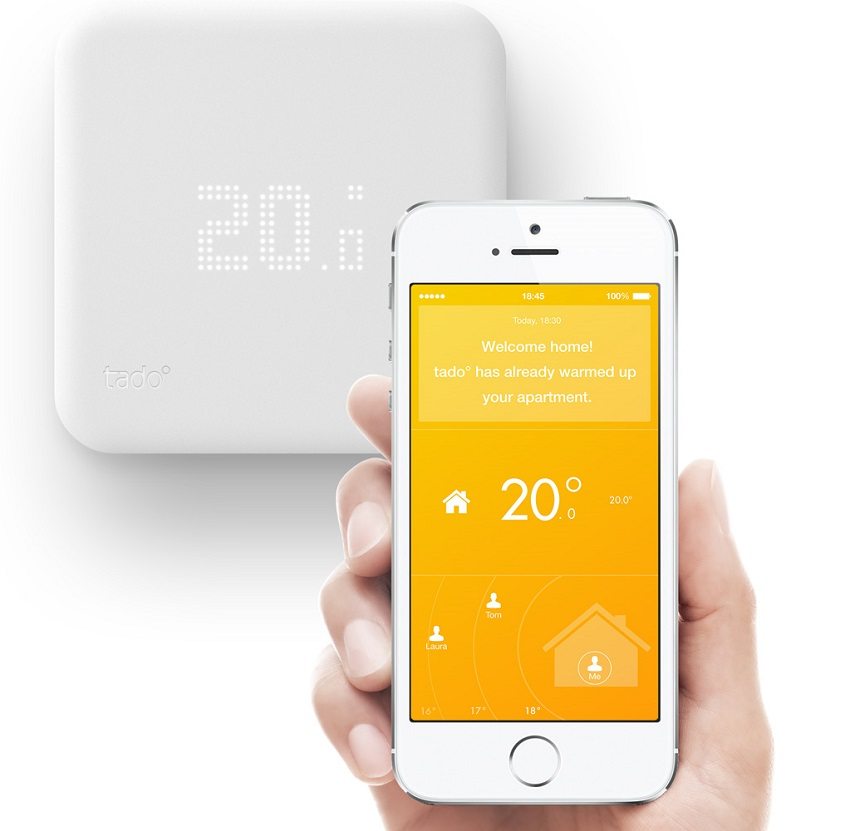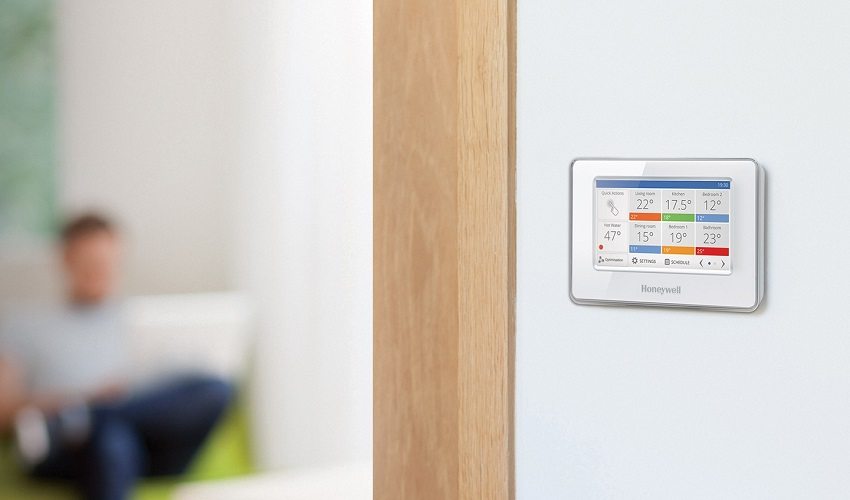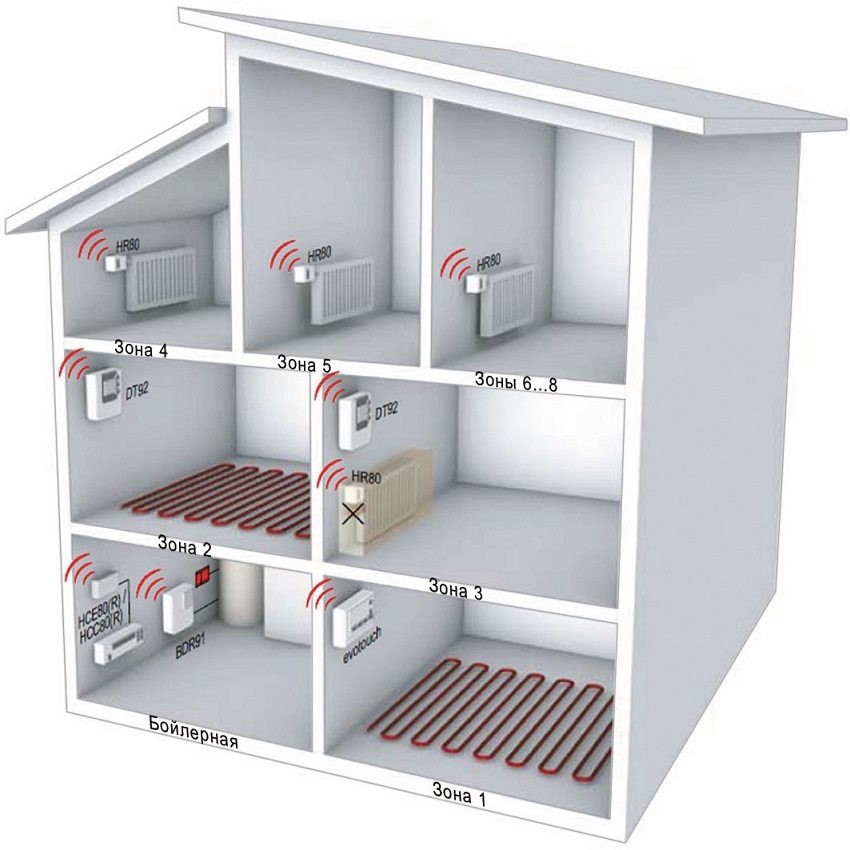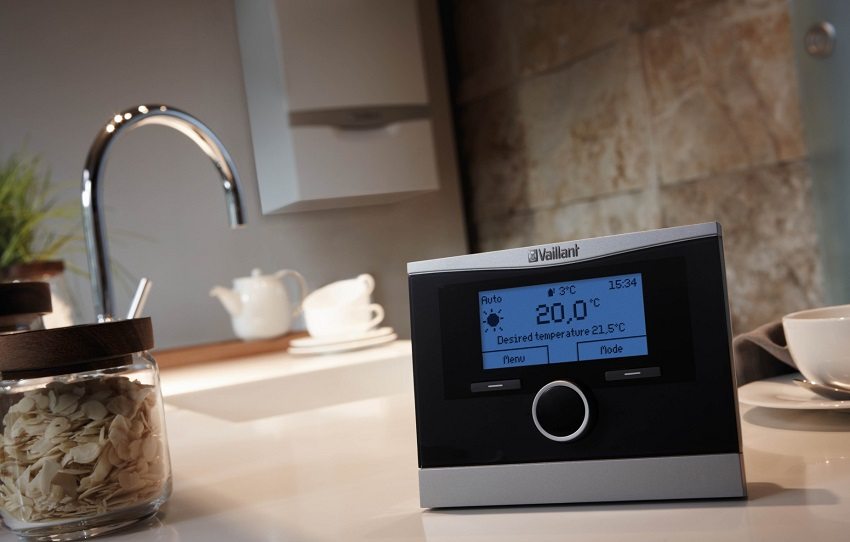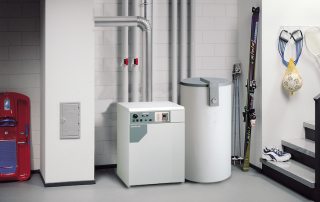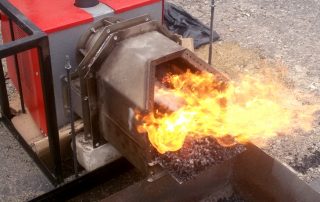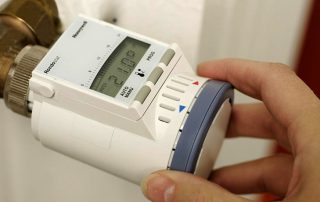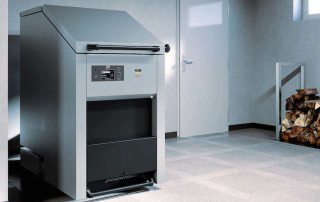Thermostats with air temperature sensor are devices that are used to control and manage gas and electric heating devices with an automatic control function built into them. With their help, you can maintain the desired temperature in the room. And the thermostat will control this process, depriving you of the inconvenience associated with the constant manual maintenance of the temperature in the heating device.
Content
What are thermostats with an air temperature sensor
A thermostat (also called a thermostat) is a device that is responsible for maintaining a given temperature by a heating device. The thermostat is considered to be the main part of the coolant control. First, the required temperature is set in manual mode, which is subsequently maintained by the device automatically.
Thermostats with an air temperature sensor are part of a heating or cooling system. It is also built into climate control systems, for example, in gas boilers and conditioners.
Basic functions of the thermostat
The main functions of the thermostat are:
- Saving – thermostat controls the level to which the air temperature rises or falls, and, accordingly, turns off the device when the desired level is reached.
- Safety - in the event of a boiler malfunction or overheating, the thermostat will notify you with a sound signal.
- Comfort - the thermostat will take care of maintaining the required temperature in the room and will save you the trouble of manually turning the system on and off.
One of the simplest and most familiar examples to us is thermostats for heating radiators or, as they are often called, thermal heads for heating radiators. Such a regulator-thermostat is installed on the pipe of the heater and serves to maintain the set temperature.
Useful advice! Installing a thermostat on a heating radiator is not difficult, while providing not only comfort, but also significant savings.
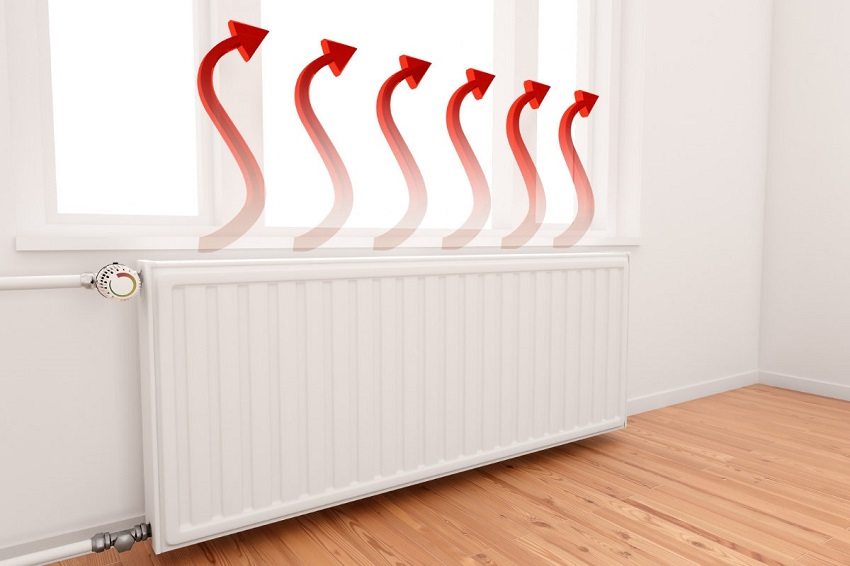
Thanks to the built-in thermostat on the heating radiators, the room will always have a comfortable temperature
The principle of operation of the thermostat with temperature control
The temperature controlled thermostat performs its function according to the following diagram:
- first, the boiler thermostat receives information about the air temperature in the coolant itself;
- then the sensors collect information about the air temperature in the heated room;
- all collected information is transferred to the control unit, where it will be stored;
- the controller compares the obtained data and accordingly increases or decreases the temperature in the coolant.
Types of sensors for measuring temperature
In order to find the right thermostat for you, you need to understand how they differ from each other.
Thermostats differ among themselves by the material from which they are made, by the method of installation, as well as by the principle of operation and functional features.
Depending on the material of manufacture, devices are:
- bimetallic (hardened plastic);
- electronic thermistors;
- electronic thermocouples.
The second and third types are more common as a thermostat for a heating boiler.
There are two types of thermostats depending on the principle of operation:
- mechanical;
- electronic.
The principle of operation of mechanical models is based on the expansion of bimetallic plates and data transmission to the control unit. Electronic models function thanks to built-in thermometers.
Depending on the method of temperature control, devices are also divided into the following types:
- collection of information on the floor sensor;
- collection of information on the air sensor;
- combined - collection of information from various sensors.
Devices that collect information on air temperature sensors are the most common. It is these thermostats that are installed on heating radiators and used for boilers and convectors.
Devices that collect information on floor sensors have a rather limited range of capabilities and are used, as a rule, in rooms with a floor heating system.
Also, thermostats with an external air temperature sensor can be distinguished as a separate type. In this case, the information supplied to the control unit is more reliable, since the data on the air temperature were obtained at a considerable distance from the heater. The thermostat with a remote sensor is mounted on the wall and connected to the general wiring.
Thermoregulators with an air temperature sensor for the incubator are also arranged according to a similar principle. The thermostat is connected to the mains, the cord with the sensor is lowered into the incubator. On the outside of the thermostat there is a socket where you need to plug the incubator power cord. With the help of the information on the display, you can control and, if necessary, change the temperature inside.
Helpful advice! If your knowledge in this area is not enough, and you cannot choose a suitable thermostat for an infrared heater on your own, contact specialists for help. This will help you avoid unnecessary hassle and waste.
Electronic sensors for measuring air temperature
Electronic sensors are becoming more and more popular these days. These modern thermostats have no moving parts to measure temperature differences in the air. For this purpose, they use semiconductor parts.
Related article:
Thermostat for a heating radiator in the systems of various houses. Types of devices, principle of operation, technical features and installation. Regulator for radiators in heating systems.
The current is used as a power supply for such devices, so they are usually installed in an outlet or on a DIN rail. Batteries can also be used as power.The voltage required for the operation of the electronic sensor is 24 volts.
Almost all electronic models of thermostats have a monitor that displays the last set temperature settings, as well as the current time and date. Modern models of thermostats are equipped with a function for setting the operation of the device in day / night mode, weekdays / weekends, and more. Of course, the presence of all these functions significantly affects the price of a thermostat for a heating radiator, so before buying, you should think carefully about how necessary all these functions are for you.
Despite the higher cost of electronic thermostats with an air temperature sensor, they have a number of advantages over mechanical ones:
- they are much easier to install yourself;
- have a significantly wider temperature range, due to which their use is permissible not only as a room thermostat for a gas boiler, but also in basements or garages, where the air temperature can drop to 0 degrees.
You can buy a thermostat with an air temperature sensor in branded branches of companies that manufacture climatic equipment. It is better to give preference to the same manufacturer that is listed on your heating boiler. In this case, you can easily connect the thermostat to the entire heating system.
If you are at least a little versed in the device of electrical engineering, you can save a lot by assembling a thermostat with an air temperature sensor with your own hands. To do this, you will need to purchase all the necessary components, including a microcontroller and a digital display.
Also, the thermostat must have an element that measures the temperature and transmits data to the processing unit, which, in turn, converts or amplifies the received pulse and gives a command to the executive element - a relay. A special circuit is used to assemble the thermostat. It is not difficult to make a thermostat with your own hands, but it is important to understand that assembly is only half the battle, then you need to configure the device and connect it to the boiler. And this task can only be done by those who are well versed in electronics. If you have not done anything like this before, it is better to purchase a ready-made thermostat in order to avoid incorrect operation of the device and associated dangerous situations.
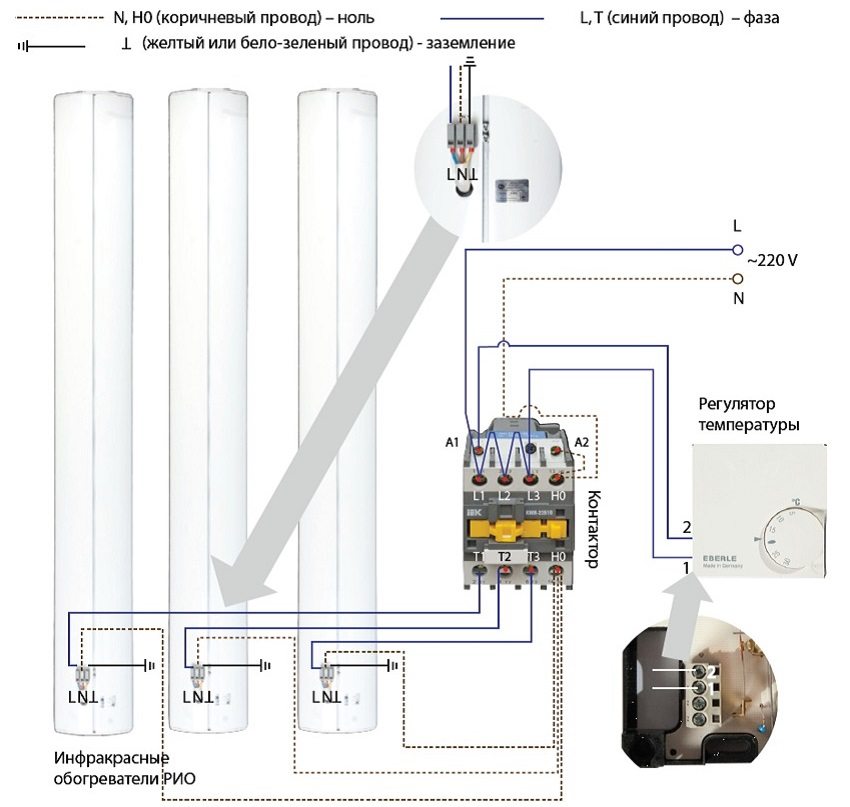
Connection diagram infrared heaters to the thermostat
Helpful advice! All thermostats for infrared heaters allow you to simultaneously connect several devices, but it is important to know that their total power should not exceed 3-3.5 kW. Otherwise, it is necessary to include a magnetic starter in the circuit, which will distribute the load.
Summing up, we can say that the purchase and installation of a thermostat for a heating or heating system is one of the most profitable investments that you can imagine. After all, the thermostat not only makes life easier for you, providing a comfortable temperature in the room, but also significantly saves you money on utility bills.
